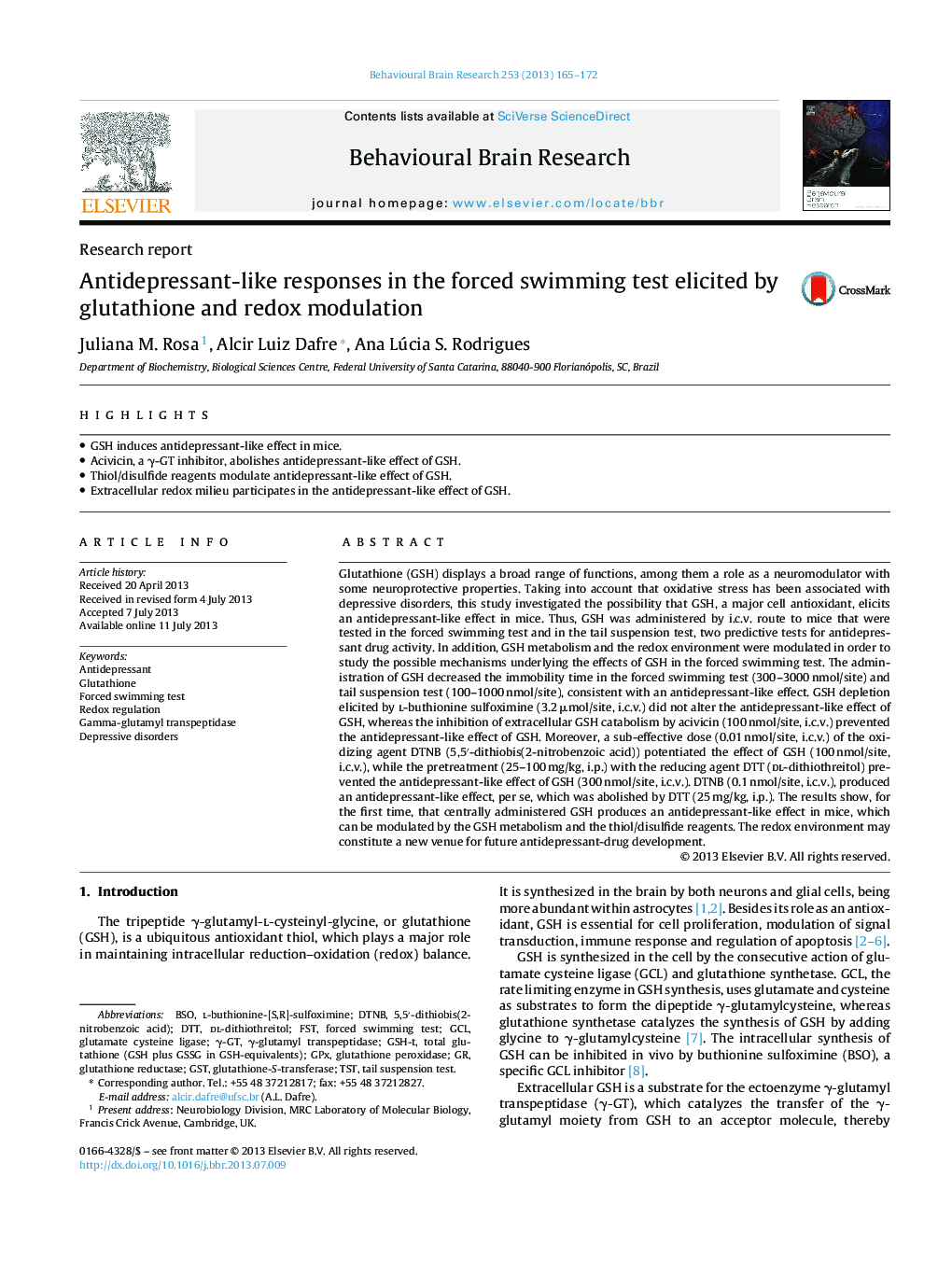| کد مقاله | کد نشریه | سال انتشار | مقاله انگلیسی | نسخه تمام متن |
|---|---|---|---|---|
| 6258661 | 1612979 | 2013 | 8 صفحه PDF | دانلود رایگان |
- GSH induces antidepressant-like effect in mice.
- Acivicin, a γ-GT inhibitor, abolishes antidepressant-like effect of GSH.
- Thiol/disulfide reagents modulate antidepressant-like effect of GSH.
- Extracellular redox milieu participates in the antidepressant-like effect of GSH.
Glutathione (GSH) displays a broad range of functions, among them a role as a neuromodulator with some neuroprotective properties. Taking into account that oxidative stress has been associated with depressive disorders, this study investigated the possibility that GSH, a major cell antioxidant, elicits an antidepressant-like effect in mice. Thus, GSH was administered by i.c.v. route to mice that were tested in the forced swimming test and in the tail suspension test, two predictive tests for antidepressant drug activity. In addition, GSH metabolism and the redox environment were modulated in order to study the possible mechanisms underlying the effects of GSH in the forced swimming test. The administration of GSH decreased the immobility time in the forced swimming test (300-3000 nmol/site) and tail suspension test (100-1000 nmol/site), consistent with an antidepressant-like effect. GSH depletion elicited by l-buthionine sulfoximine (3.2 μmol/site, i.c.v.) did not alter the antidepressant-like effect of GSH, whereas the inhibition of extracellular GSH catabolism by acivicin (100 nmol/site, i.c.v.) prevented the antidepressant-like effect of GSH. Moreover, a sub-effective dose (0.01 nmol/site, i.c.v.) of the oxidizing agent DTNB (5,5â²-dithiobis(2-nitrobenzoic acid)) potentiated the effect of GSH (100 nmol/site, i.c.v.), while the pretreatment (25-100 mg/kg, i.p.) with the reducing agent DTT (dl-dithiothreitol) prevented the antidepressant-like effect of GSH (300 nmol/site, i.c.v.). DTNB (0.1 nmol/site, i.c.v.), produced an antidepressant-like effect, per se, which was abolished by DTT (25 mg/kg, i.p.). The results show, for the first time, that centrally administered GSH produces an antidepressant-like effect in mice, which can be modulated by the GSH metabolism and the thiol/disulfide reagents. The redox environment may constitute a new venue for future antidepressant-drug development.
Journal: Behavioural Brain Research - Volume 253, 15 September 2013, Pages 165-172
